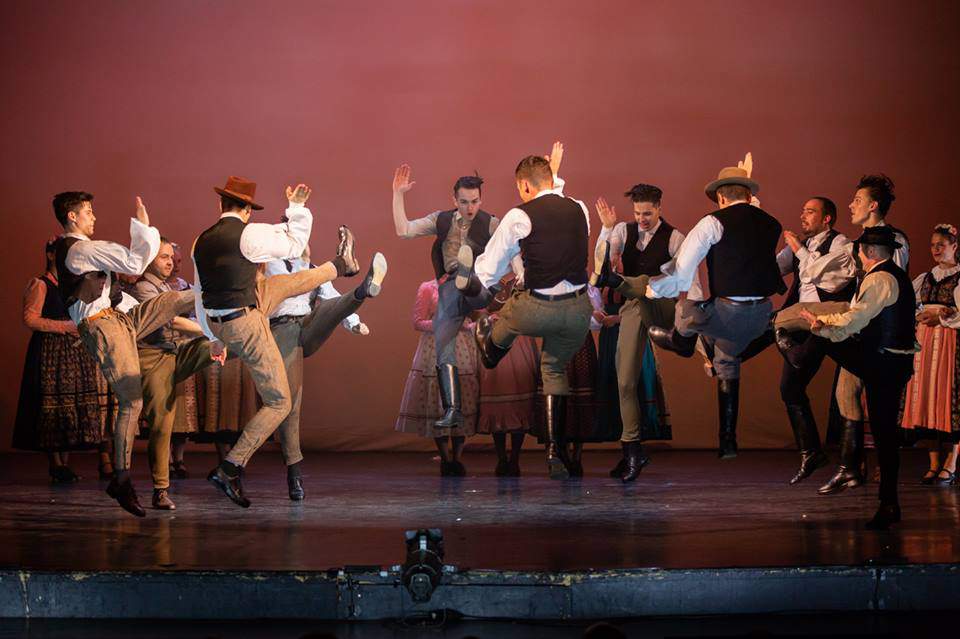Traditional Hungarian folk dance types – VIDEOS
Like many other nations, Hungarians have always been very proud of their traditional folk dance. Every year, there are folk dance festivals organised all over the country to keep the tradition alive and celebrate those fantastic dance groups who practice the oldest forms of folk dance today. Let us take a look at the most well-known types of Hungarian folk dance.
Hungarian folk dance types can be divided into two major groups: the old style Hungarian dances and the new style Hungarian dances.
Old style Hungarian dances
Karikázó (the maiden’s round dance)
Karikázó is a really special type of folk dance, most popular in the southern and northern regions of the country. It is performed by women only, who form a circle and dance while being accompanied by the singing of folk songs.
In the past, this dance was often combined with children’s games, differentiating it from the chain dances of the Balkans. Karikázó was the main form of dancing in the Middle Ages in Europe. However, more modern pair or couple dances soon took the place of karikázó. Today, one can also see women doing the karikázó on rare, special occasions like national holidays or small town festivals.
Pásztortánc (Herdsmen’s Dances) and botoló (stick dance)
Both pásztortánc and botoló are (and used to be) performed by men. While men danced the pásztortánc, they were accompanied by bagpipes, shawms, fiddles, and drums.
The Botoló (Stick Dance) is a wild hajdú dance of the old times which used to be performed with the help of a stick. However, recreational folk dances are usually not done with a stick.
Legényes and ugrós (Lad’s and Leaping Dances)
The Legényes and the ugrós are men’s solo dances, very typical of the Kalotaszeg region of Transylvania. These types of dances are usually performed by young men, but older men can dance them as well. These are freestyle, solo dances usually performed in front of a band.
These dances are characterized by jumping, running and heel clicking. Until today, the legényes is still one of the most popular dances of the Hungarian peasantry. Sometimes women participate too, in the form of standing in lines on the side and singing verses while the man dances.
New style Hungarian dances
New style dances developed in the 18th and 19th centuries, characterised by Hungarian embroidered costumes and energetic music.
Verbunk (recruiting dance)
Verbunk is also a solo man’s dance which evolved from the recruitment process of the Austro-Hungarian army. When the Austro-Hungarian armies were established, many tools were used for recruitment purposes, including musical entertainments and jollifications. Trained recruitment professionals visited the smallest towns in the country, entertaining the local (often peasant) crowd, dancing and drinking, marketing how amazing army life is. A lot of young men were lured into a lifelong army contract this way.
The dance itself is often improvised. The verbunk is different from the ugrós-legényes in its musical accompaniment. Ugrós-legényes has a much faster tempo, it is more “old-school”, while the verbunk has a really even rhythm (every measure of the 4/4 beat is accented).
Csárdás
The csárdás dance can be traced back to the Renaissance period. Its music is very similar to that of the verbunk. Traditionally there are two types: the slow csárdás (which has an even rhythmic pattern) and the quick csárdás (which has an esztam (oom-pah) beat).
Csárdás has many variations. It is a couple dance, always danced in pairs. It is also improvised. The tempo of the csárdás starts slowly, and then has a gradually accelerating tempo.
Featured image: Budapesti Főváros Bartók Táncegyüttes/Facebook.com/bartokdance
Source: Wikipedia, www.socalfolkdance.com
please make a donation here
Hot news
What happened today in Hungary – 26 July, 2024
Drama: number of births in a 20-year low in Hungary
Yay or nay? – 6 odd Hungarian delicacies that make our skin crawl
Budapest tourism “exploded” this past weekend
Container transport in Budapest may stop: How will this affect Hungarian economy?
Minister: Hungary will protect its territory by every means possible




